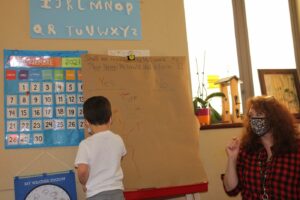 In order to promote tenants of diversity and inclusion practices within a Pre-Kindergarten classroom there is a need to intentionally shift educators’ thinking about their everyday use of language to determine the impact that it currently has on the acceptance of children from diverse backgrounds. Whether conversational or embedded within lessons, books and environmental print, the language that we utilize is a critical part in children’s social and emotional development. Children are vulnerable members of our society and the earlier they develop tools for finding their voice, the sooner they will develop the pro-social skills that allow themselves to feel accepted and safe within our classroom environments and interactions outside the school setting.
In order to promote tenants of diversity and inclusion practices within a Pre-Kindergarten classroom there is a need to intentionally shift educators’ thinking about their everyday use of language to determine the impact that it currently has on the acceptance of children from diverse backgrounds. Whether conversational or embedded within lessons, books and environmental print, the language that we utilize is a critical part in children’s social and emotional development. Children are vulnerable members of our society and the earlier they develop tools for finding their voice, the sooner they will develop the pro-social skills that allow themselves to feel accepted and safe within our classroom environments and interactions outside the school setting.
This reflection on the teachers’ part led us to a conclusion that one need not ascribe to a particular belief about a person, situation or even an animal, simply because it has historically been presented a particular way. One of the children’s favorite gross-motor group games is “Mr. Fox” and they delight in running away from the fox at the finish of the game! One teacher thought that assigning a gender to the fox could potentially lead to exclusion, since we really don’t know if the fox is male, so we decided to rename the game “Furry Fox”, since we do know that foxes are quite furry! Children were asked if they knew the reason why they were running, who they were in the game (chickens) and why Furry Fox tells them it is “midnight” and they run away. Only two children were able to articulate that a fox eats chicken and that they hunt at night, therefore they are a nocturnal animal. As this gave us pause and one of the children’s interest areas is studying animals, an opportunity for a closer look at foxes presented itself.
This study is currently underway in the classroom. We began the mini unit with a poll entitled “What Does the Fox Say?” and all children gave their rendition of what they imagined a fox sounds like, as no one actually knew. We shared a portion of the book “What Does the Fox Say?” and then danced to the silly, KIDZ BOP version of the song. Teachers have selected a variety of children’s literature and informational text to share with children over the course of the next several weeks. Text-to-text comparisons will be charted to allow for children to view traditional depictions of foxes as “bad guys” in fairy tales, fables and children’s literature and more contemporary characterizations that show that a fox simply “is”; living in the state of being to which it was born. Informational text will allow children to explore the facts about foxes in more depth, as we have also charted “essential questions” that children have about foxes, shared through their writing with others at Circle Time.
Teachers and children will then chart findings together about foxes and students can make text-to-self and even text-to-world connections. This study is intended to allow children to draw their own conclusions about foxes and is a building block for critically thinking about a subject, rather than accepting limited exposure and viewpoints as facts, which is a skill they can carry with them as they navigate their future academic endeavors.
In as much that processing ideas in a critical fashion is essential for healthy cognitive and social-emotional development, so too is the recognition that our internal feelings and ideas carry value for the self and in our interactions with the external world. A quick vote on the spot revealed that the children loved the idea of playing the traditional game of “Simon Says”, but wanted to substitute their own name, instead of using “Simon”. It is a common practice in our classroom to vote on different topics for study or changes we propose making, whether teacher or child driven.
Again, as teachers reflected on the use of language in the classroom, the use of adjectives that limit possibilities and promote one-way conceptual schemas was brought to mind, so teachers proposed a reworking of the children’s classic song “Old McDonald had a Farm”. Do farmers have to be old? Can someone that is young have a farm; or one of middle age? We all thought that was possible, so each child had the opportunity to have an animal for the farm and put in their own name as we sang the song (ex: “Yaremi McDonald Had a Farm” or “Daniel McDonald Had a Farm”). Children were then invited to come up after their turn and vote whether they wanted to change the name of the song on our classroom song chart. In a landslide vote for all children present that day, the polls revealed an affirmative vote. Final results will be tallied after absentee votes are calculated.
Developmental theorists have proposed many variations of how it is that humans develop over the course of their lives. One fact seems to be clear; that the environment in which children find themselves is highly influential in their belief system later in life. That very environment is compromised of the tangible items and abstract perceptions, colored by the language in which they are immersed. Open conversations about skin color, how skin on one person’s body can vary, the differences and similarities amongst ourselves have been enlightening and have revealed that most children in our classroom, ages 3-5 years of age, readily accept those that are a different color than themselves and love to make the connections of how similar we are as people.
Humans have historically used linguistics of all types to explain the world and communicate about the human experience, as well as exert control over it. Providing the foundation for using open-ended language, both oral and written, in the early childhood years can set into motion the goal for more inclusive and diverse learning environments across various sociological factors, which lays the steppingstones towards a more inclusive world.
(Click to Enlarge)

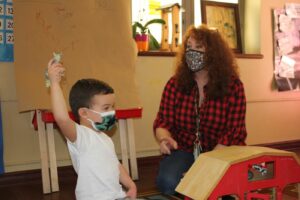
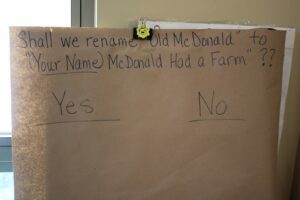

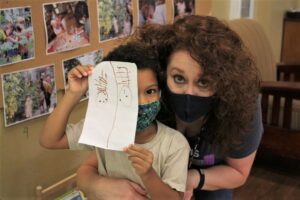
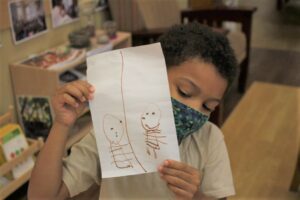
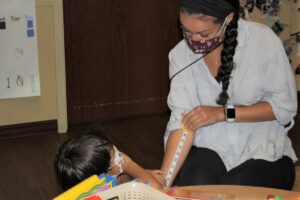
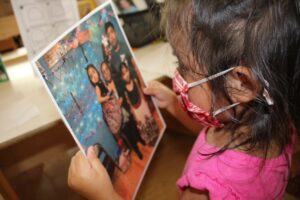
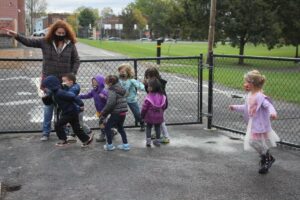
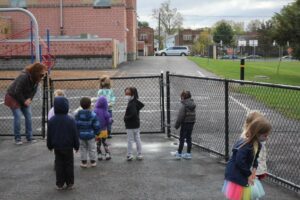
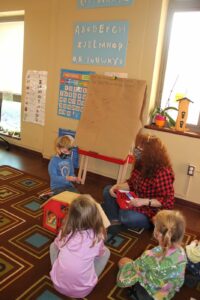
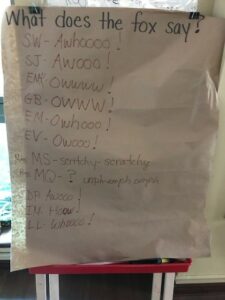
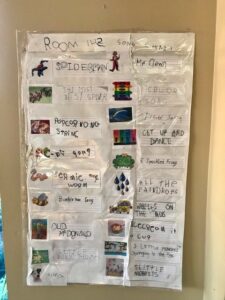
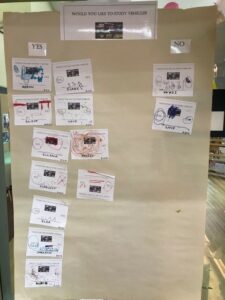
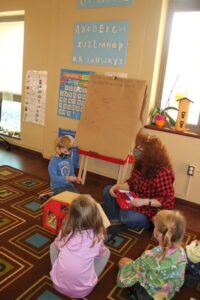
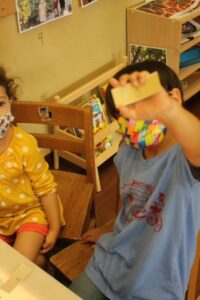
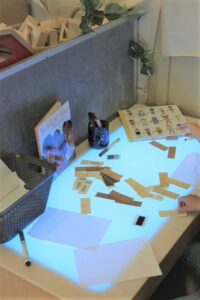
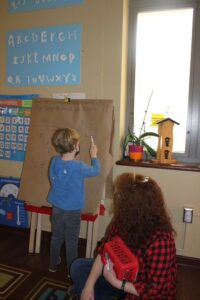
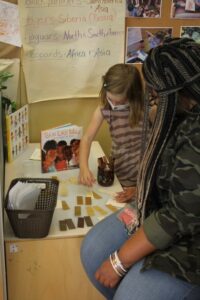
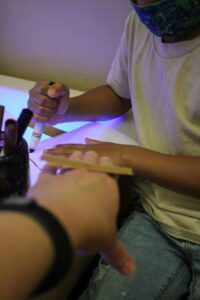
Footer
Schoenbaum Family Center and Crane Center for Early Childhood Research and Policy
Building opportunities for all young children to learn and thrive through policy, practice, research, and evaluation.
Click on the logo below to visit the website of our research partner the Crane Center for Early Childhood Research and Policy.

